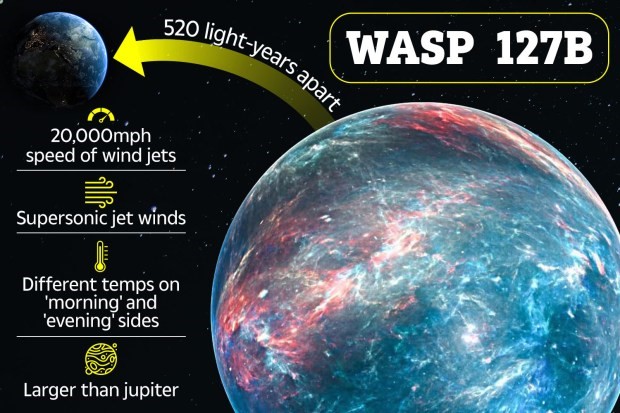7667766266
enquiry@shankarias.in
Recently, the astronomers have detected winds howling on large gaseous planet, WASP-127b.
An Exoplanet is any planet beyond our solar system. Most of them orbit other stars, but some free-floating exoplanets, called Rogue Planets.
Research Findings
The supersonic jet-stream winds circling WASP-127b at about 33,000 km per hour.

References